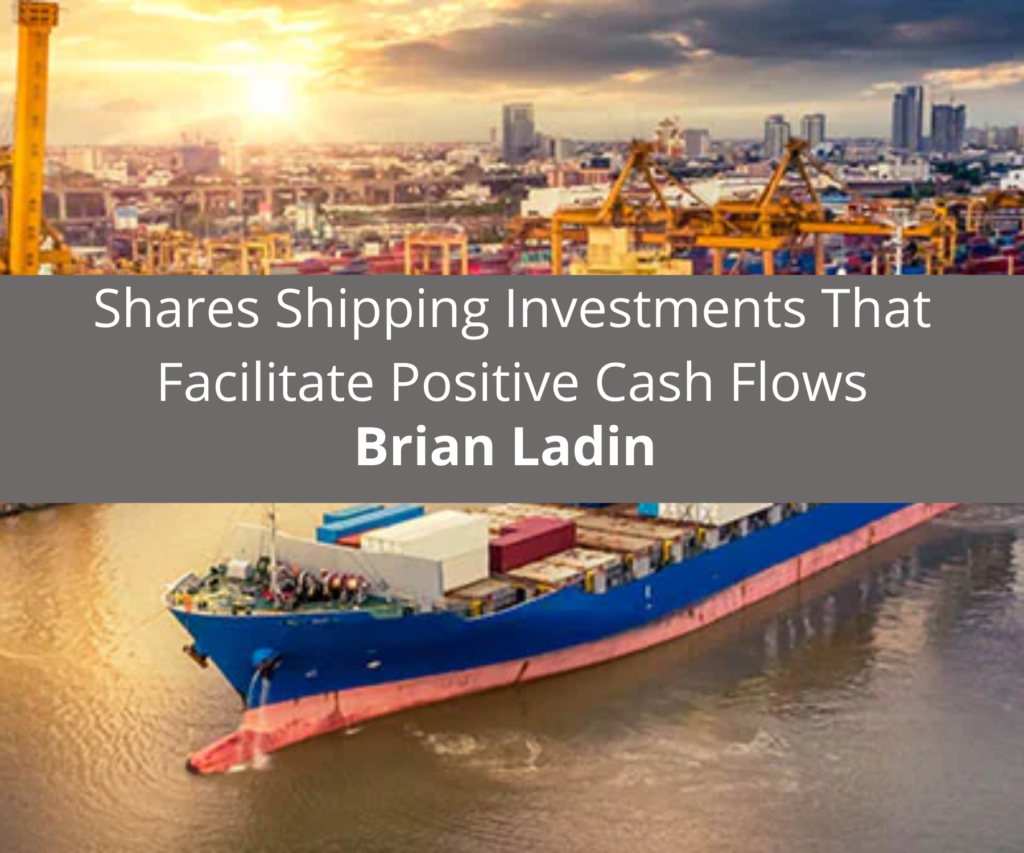Brian Ladin Shares Shipping Investments That Facilitate Positive Cash Flows


As the majority of new investors focus on mainstream assets, the likes of which include stocks and bonds, market opportunities for those willing to venture into less popular spheres grow. This is because the demand and supply play a crucial role when it comes to the profitability of any investment category. After all, when the buyers are willing to spend more money on securities, the constant bidding will cause the average prices to skyrocket. And while higher prices are great for those who already have strong portfolios, they will form challenging barriers to entry for any new investors.
In order to overcome such problems, research-prone buyers often look for markets that may not be as popular. Doing so allows them to find more investment opportunities that will often be much cheaper and easier to come by. One great example is the sector of shipping. Even though it is responsible for most of the trade that takes place in the world, the number of people who invest here is remarkably low. So, what exactly is the shipping industry and how can people leverage it to produce positive cash flows?
The Shipping Sector
The shipping sector is responsible for the transportation of goods between cities, states, and countries. It is divided into four major categories that include air, water, rail, and road transportation. In other words, everything from planes and ships to trains and trucks will be directly tied to this sector. According to the International Chamber of Shipping, 90 percent of all trade that takes place in the world is carried by the global shipping market. That number further translates to more than half a trillion dollars paid in total freight rates. Hence why the size and power that accompany the shipping market are probably unparalleled by any other industry that currently operates in the world. One might still ask, however, how exactly does all this relate to investment-based cash flows?
In the words of a shipping investor who bought and sold north of $1 billion worth of shipping assets in the past nine years, Brian Ladin, the shipping world is an interesting sector for investments. The reason why breaks down into two major explanations. First, it is because this market is one of the largest ones in existence. Not to mention that it seems to be growing at a non-stop rate. Also, shipping remains on top of the list of the most overlooked investment spheres. That makes it an outstanding target for buyers who are looking to avoid fierce competition that can hinder cash flows and passive income. To better understand some of the most lucrative ways to get involved, Mr. Brian Ladin introduces the following two methods.
Using Exchange-Traded Funds
Exchange-traded funds (ETFs) were made popular by the stock market where investors frequently use them to reduce risk and maximize diversification. The way that they operate is based on a combination of a few different assets put together. Thus, buyers are able to purchase more than one type of security and enjoy cohesive investment groups connected by many common denominators. The same concept applies to ETFs in the shipping market, which includes the Breakwave Dry Bulk and Invesco Shipping, where NYSE-traded shipping stocks are combined by financial specialists. Buyers can easily acquire as many ETFs as they want and start building positive cash flows through lucrative sales.
Hedging on Freight Agreements
Although it is not as easy as the ETF route, successfully hedging on freight agreements will lead to solid cash flows much faster. These are known as Forward Freight Agreements (FFAs) where investors speculate on the freight rates. Then, they buy/sell freights for future dates and hedge against the rate volatility. It is important to note, however, that there are certain barriers to enter the FFAs and beginners may find them overly complex.
To get started, Brian Ladin advises prospective investors to spend some time researching the market and getting a general understanding of where things currently stand and what developments are needed. After doing so, it is time to seek start-up businesses that seem to have verifiable data supporting their technological pursuits. The final step is investing and waiting to see if the profitability predictions were accurate.

